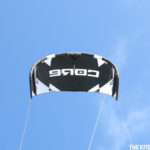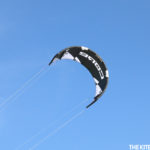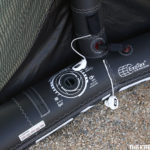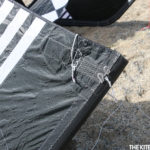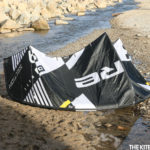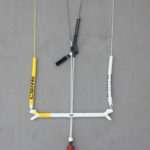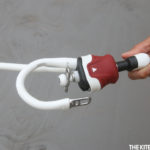Sizes Available: 4, 5, 6, 7, 8, 9, 19, 11, 12m LW, 13.5m LW
Sizes Tested: 9m
Core Says:
Hitting the best waves is challenging. Especially with variable wind or swell direction. But, it also makes us better wave warriors when we trust our gear. Improve your odds of catching and smashing the cleanest waves on the Section 3, a thoroughbred wave machine with CIT Modes. Select your preferred CIT mode (onshore, offshore or allround) and ride the pocket like Willow.
A great surf kite is one that gets you to the best waves and keeps you on them without a fuss. It needs excellent drift and quick loops to stay afloat in onshore wind conditions with big, fast waves. Offshore conditions require a fast kite with huge depower to stay in front of the window. The Section 3 ticks all the boxes with its new and expanded wind and steering settings. Wedges. Monsters. And mush. #hf!
If you’re looking for effortless surfing and the right amount of pull, the new Section 3 will get you upwind and onto the cleanest waves.
Visit for more info: www.corekites.com/us/kites/section-3
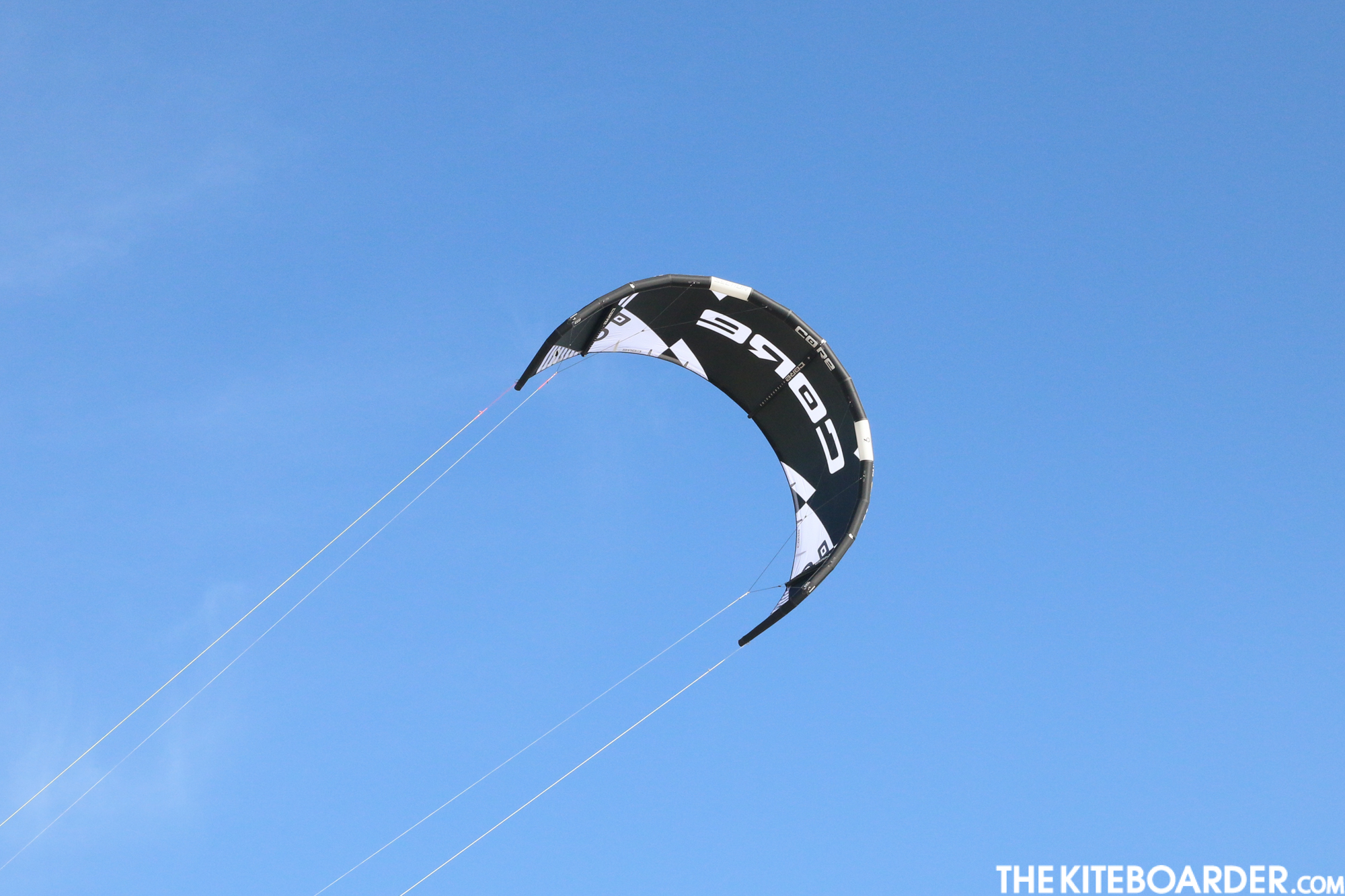
TKB Says:
When it comes to selecting a surf kite, we often think about a kite that offers up quick turning speed, ample yet finely tuned power delivery and generous drift. The Section offers all of these things, but perhaps most impressively of all, it allows simple but effective tuning options to match the kite’s performance to the conditions you are facing.
Inflation Valve: Standard pump hose without adapter
Flying Line Attachments: Center bridle: Larks head / Wingtip bridle: Knot
Centerline Split: Low-V
Front Bridle Options: Three options
Design and Features
The Section 3 is Core’s classic surf kite which sports a medium aspect 3-strut canopy and a sweptback leading edge that terminates in square wingtips that give you quick turning performance. The Section 3 features Core’s proprietary inflation valve that requires a normal size pump hose without an attachment on the end to be inserted into the valve and needs to be rotated to lock. With the large size aperture, the kite inflates very quickly and the valve stays closed until you put a 2.5”³ plastic finger (hidden in a pocket of the center strut and attached by a small tether) into the valve to allow the air to deflate. The Section 3 got some seemingly minor but key improvements over its predecessor with a triple setting front bridle that utilizes two pulleys and a slider to control the angle of attack. You can choose from ”˜Onshore, Allround, and Offshore,’ to dial in the kite’s behavior. The front bridle pigtail ends with a larks head loop and the wingtip pigtail attachment points end in three knots to tune for power. The wingtips offer three attachment points to adjust between ”˜Medium, Easy, and “Super Easy’ sheeting settings with the stock position in the middle ”˜Easy’ location. The Section has less dacron in the wingtip than some of their more beefier kites like the XR and uses a slightly smaller double ripstop trailing edge with two battens and two foam battens across its trailing edge.
Impressions
Right out of the gate, we noticed the Section’s medium bar pressure which contrasts against the feel of the XLite and XR series of kites in Core’s lineup. It feels like you get more power delivery in a smaller bar movement within the throw, but the turning response and steering initiation feel crisp and fast. The Section in its universal mode seems to want a little more active kite flying to line up the power with movement through the window, but without moving the front bridle CIT settings you get an excellent balance between depower and pull, both of which can be dialed in with the three settings on the leading edge bridle. We found the onshore setting to work better for park and ride style surfing where the kite sits deeper. The offshore setting put the kite a bit farther forward in the window with more progressive sheeting that offered faster access to depower, and this seemed to work better for more active wave riding with the kite flying across the window. The steering response is in tune with dedicated wave riders’ needs and offers snappy steering initiation, because turning is everything for surf. The Section offers a fairly tight turning arc and delivers in the drift department, reliably sucking up line slack as we carved down the line.
The Section doesn’t give you the same high lift boosting power you find in performance freeride kites, but it’s also not entirely too shabby when powered up and in capable hands. The Section can be fun to jump with its precision steering and will definitely get strapped riders over the biggest sets. The Section’s relaunch was really reliable; with just a little bit of bar input, the kite will flip from a nose-down position at the bottom of the window and immediately pop back into the air, with the kind of relaunch you want from a surf kite. If you swap the CIT settings to offshore, the Section can work just fine as a foilboarding kite. The ideal Section customer is the surf-minded kiter that requires a precision turning kite that has flexible power control that turns on and off when you need it. While the ideal pairing would be a surfboard, the Section would also prove a suitable crossover into the foiling realm and can still be quite fun on a twin tip.
Matching Control Bar
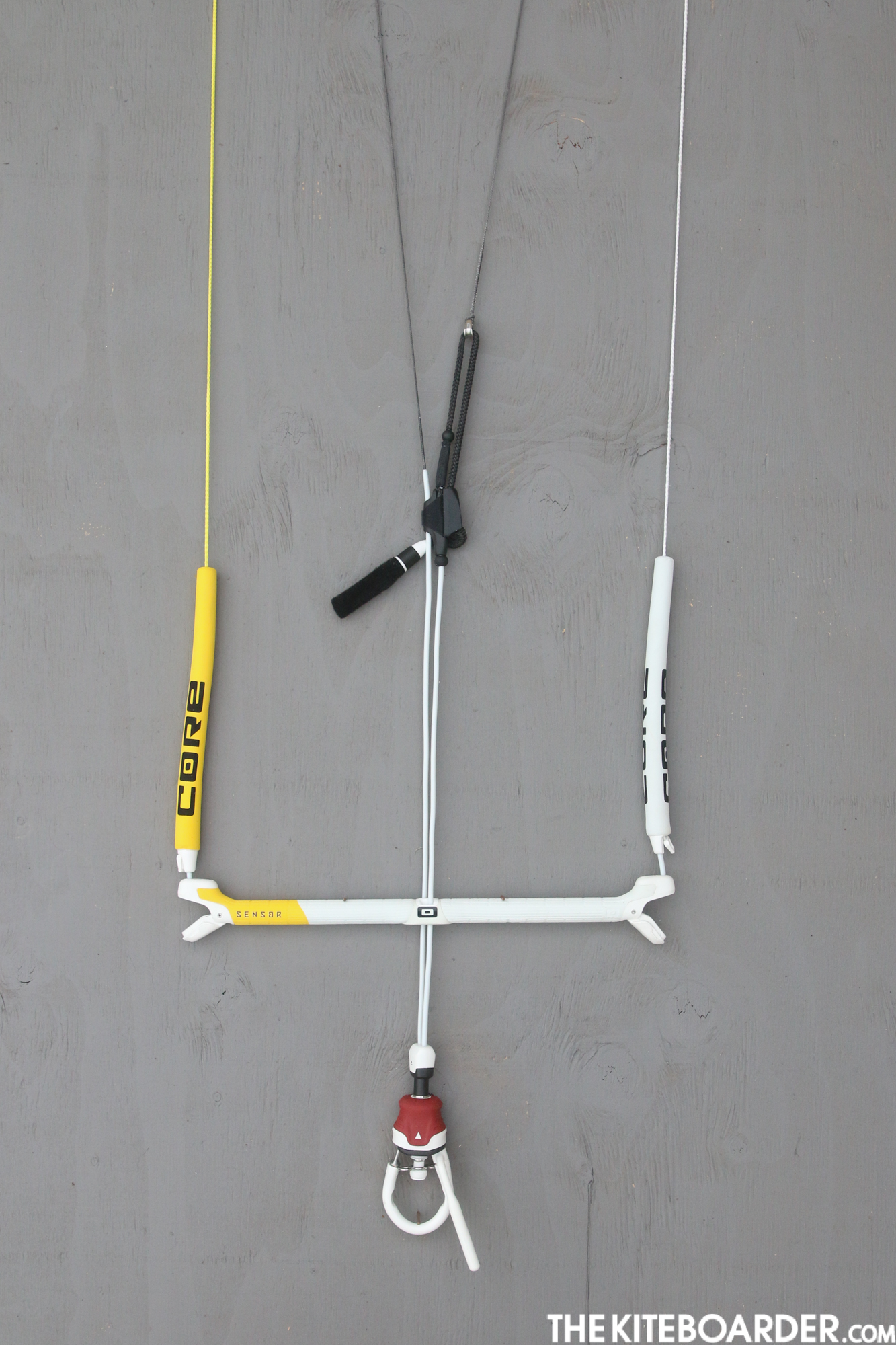 2021 is a big year for the Core bar line with the addition of the Sensor 3, Sensor 3+ and Sensor 3 Pro bars, which feature some fairly large changes to the bar’s chassis and safety system. The Core control bars have long been known for their lightweight, clean feature-rich design, and above all else, the unique rotator style quick release (RIP) that required the rider to rotate the quick release rather than push away, in order to trigger the safety system. While the advantages of rotation have been discussed in infinitum, the swap to a push away this year brings the ease of resetting the bar with a click-in system, and this is clearly a big selling point, along with a standardized motion for triggering safety across the industry.
2021 is a big year for the Core bar line with the addition of the Sensor 3, Sensor 3+ and Sensor 3 Pro bars, which feature some fairly large changes to the bar’s chassis and safety system. The Core control bars have long been known for their lightweight, clean feature-rich design, and above all else, the unique rotator style quick release (RIP) that required the rider to rotate the quick release rather than push away, in order to trigger the safety system. While the advantages of rotation have been discussed in infinitum, the swap to a push away this year brings the ease of resetting the bar with a click-in system, and this is clearly a big selling point, along with a standardized motion for triggering safety across the industry.
Having tested the Sensor 3Pro (kitefoil length) and the Sensor 3+, it’s worth noting that these are very similar bars with some slight variations in the Pro trim level, that have a little to do with weight, but mostly to do with line thickness and lengths/extensions. The chassis you get with the Sensor 3 or 3+ is plastic, and while it isn’t the same material as the Sensor Pro’s composite frame, the base model is still a very lightweight bar overall. If you hold the two in your hand, the difference is discernable but not hugely obvious. The Sensor 3 gets 24m lines that are the standard line diameter, but if you upgrade to the Sensor 3+ then you get the thinner Vario lines that come with the Pro, but with 2m and 4m extensions that allows you to rig up four different line length options (18m/20m/22m/24m).
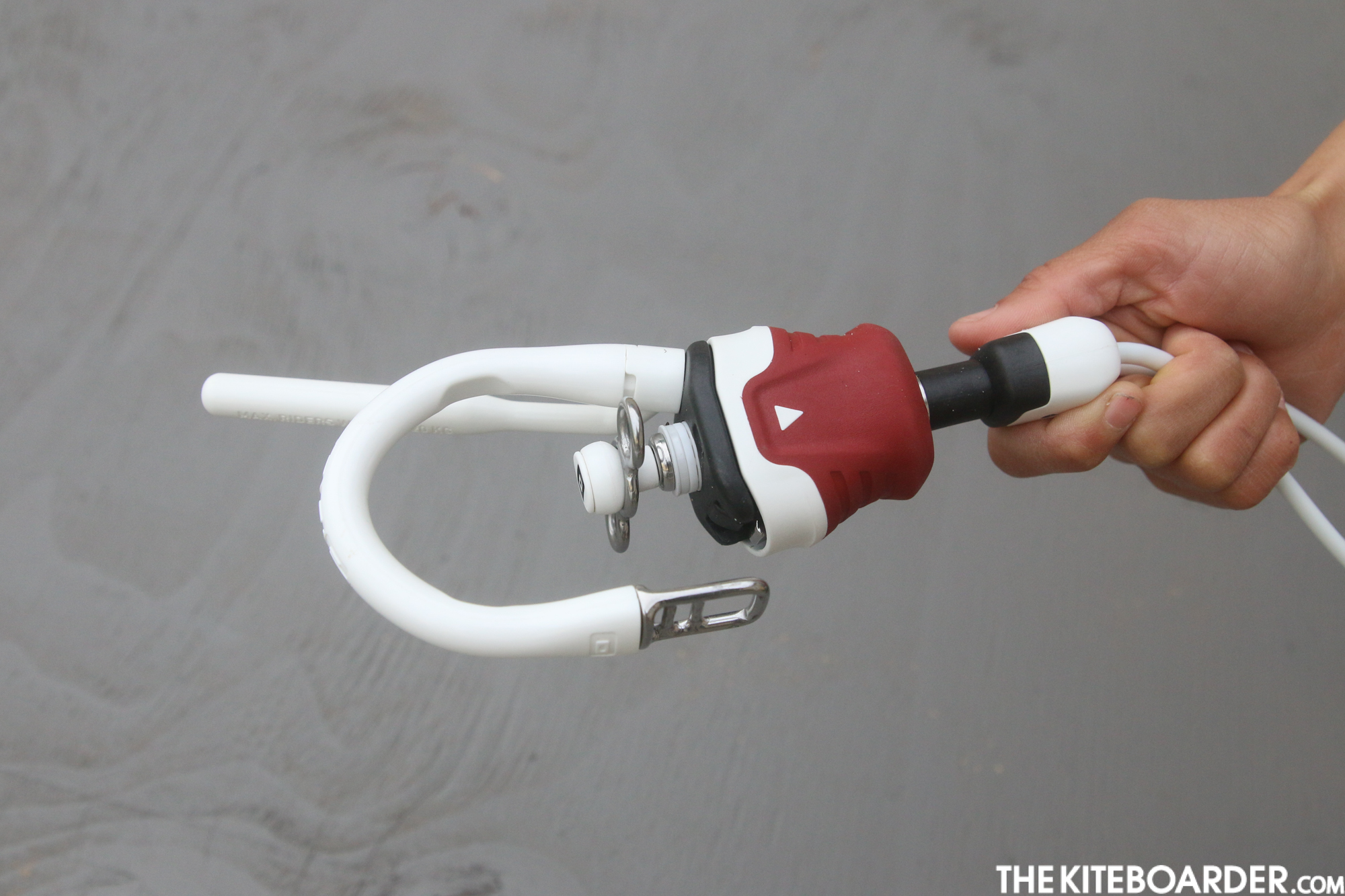
One of the many, but probably the biggest change to the Sensor line is Core’s new ‘click-in’ style quick release which features a minimal shape with molded grooves that do a great job of guarding against accidental triggers but allow you to get a good grip on the trigger when needed. The QR features the new click-in style reset where you just need to insert the end of the loop back into the QR body and it clicks itself close. It’s a very clean design and the key on the end of the QR loop is really easy to find its way back to its target with a very obvious audible click that gives you good confirmation that you are good to go. The power tuning system uses a Cam cleat and a toggle with a bungee built into the tuning line as well as Velcro to keep the toggle in place during riding. The tuning system is both clean and simple as well as very smooth and easy to operate. The above the QR handle swivel has an excellent smooth motion that also acts as a quick-release guard and transitions into the double PVC coated throw lines that travel through the bar with a single centerline safety depower that’s routed up one of the lines. The PVC throw lines feature a fairly thin diameter which we noted translated into remarkably smooth movement of the bar during riding; the bar additionally auto untwists your center lines after you do spins. The bar’s center insert has a logo that tells you when you’re holding the bar the right way and on the other side, a red ”˜stop’ sign and a red line that goes all the way across the bar indicates when you’re holding the bar wrong. The bar grip has nice, thin, EVA on it with good texture without bumps or any of the asymmetrical ergonomic shapes. The bar ends got a complete redesign, becoming more streamlined with the bar’s end opening up like a snake’s mouth for two purposes. First, to create a winding post for stowing your lines, and second to access the cassette that changes the length of the bar. By just pressing and rotating a small cassette you can change the outside line mounting points, and you also get three knots to adjust/tune the length of the outside lines. This slick design makes the bar ends super streamlined during riding, yet easy to wind your lines when you are done. The floats are separate from the bar ends and feature hidden bungees for a clean wrap job. Once again, Core has re-imagined their kite bar with some very innovative concepts while keeping the overall product in a nice lightweight, simple and clean layout that is sure to continue to be a cult favorite to riders of all persuasions.
Visit for more info on the bar: www.corekites.com/us/bars/sensor-3

With over 112 products reviewed, get the digital version of our 2021 Gear Review Guide that puts all the latest products reviews in one easy to access and searchable guide. Want a low-v bar with a durable PVC coated throw line and soft padded bar ends? Use our guide to stay on top of gear developments and find the exact piece of equipment to match your style.
*Already a subscriber or purchased our 2021 Gear Review Guide in the fall? Your guide has been updated to our latest version in your Tkb library. Log into your account to read the latest reviews.



